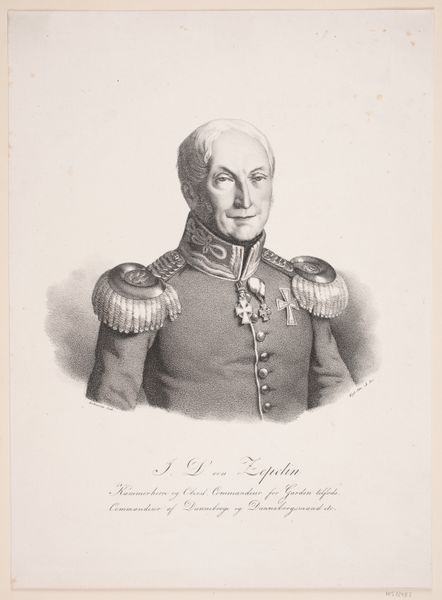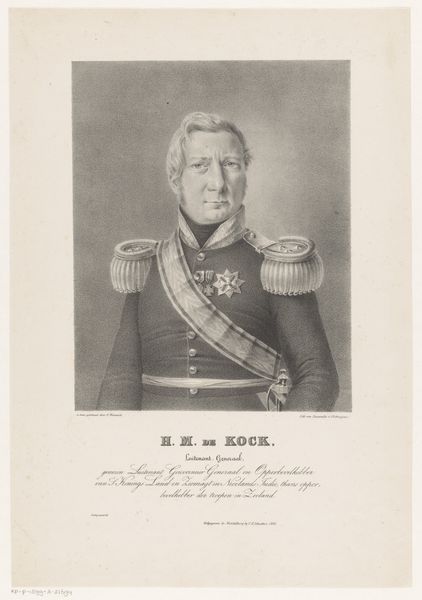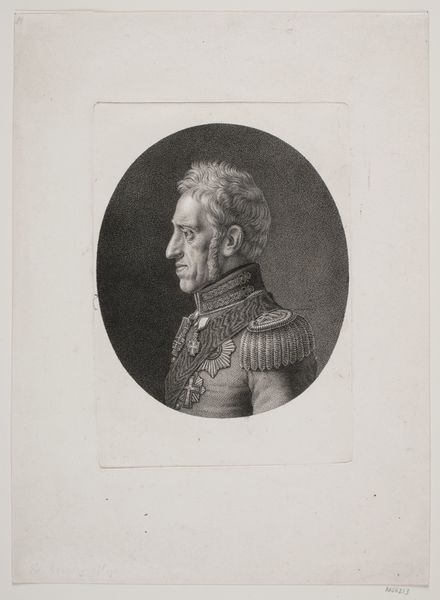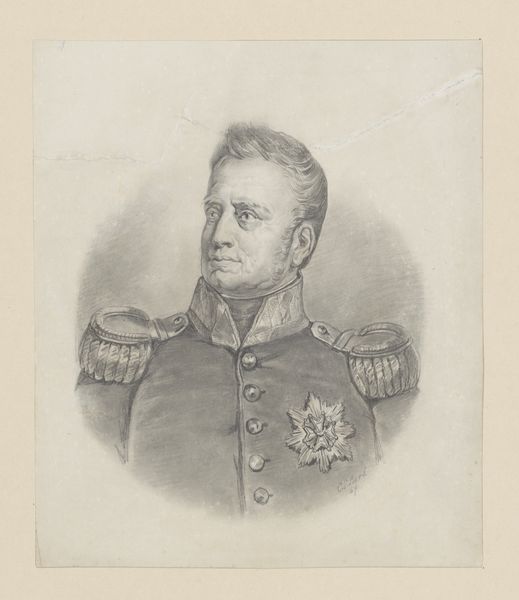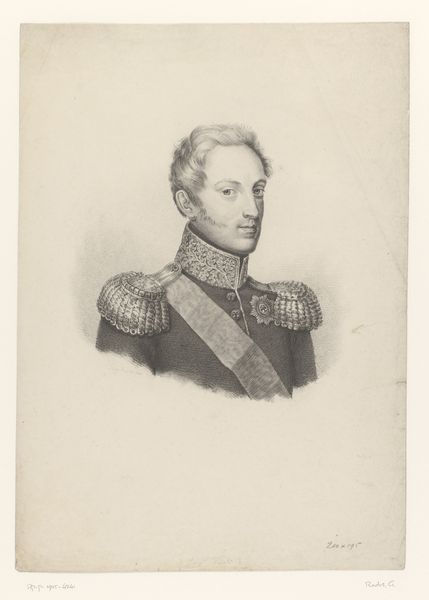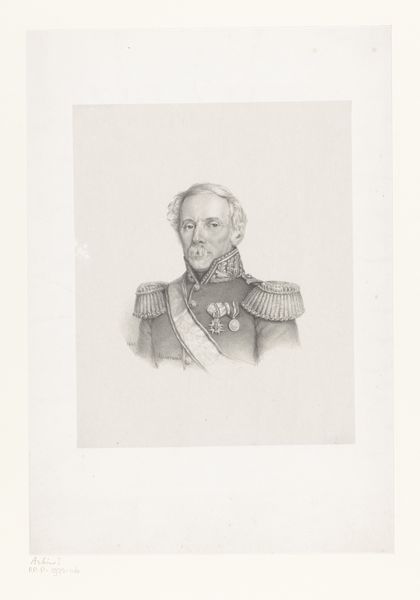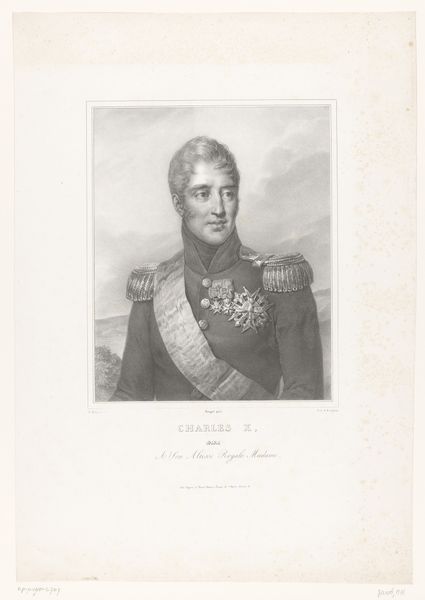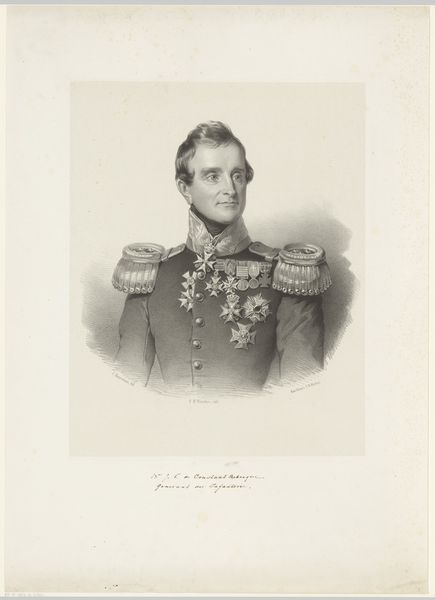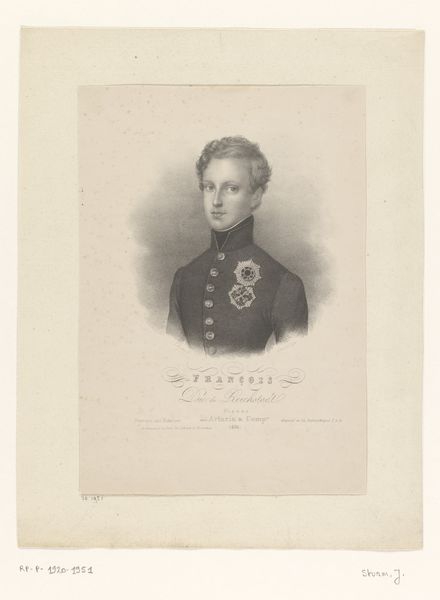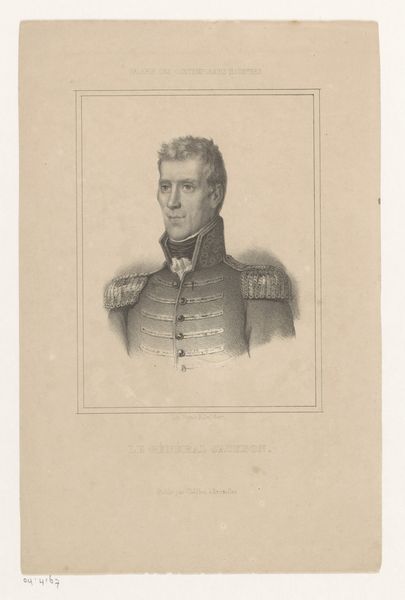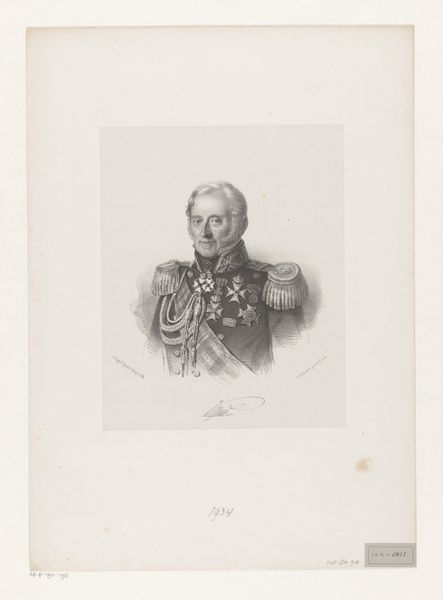
lithograph, print, engraving
#
portrait
#
pencil drawn
#
neoclacissism
#
lithograph
# print
#
engraving
#
realism
Dimensions: 370 mm (height) x 258 mm (width) (bladmaal)
Wilhelm Heuer made this portrait of Frederik VI using a printmaking technique called stipple engraving. Look closely, and you’ll see that the image is composed of thousands of tiny dots, built up slowly to create the effect of shading and volume. This process is incredibly labor intensive, requiring the engraver to use a special tool to create each individual dot on the metal plate. The stipple engraving process, which emerged in the late 18th century, allowed for a softer, more painterly effect compared to traditional line engraving. This made it a popular choice for portraiture. By using this technique, Heuer was able to capture the likeness of Frederik VI and also convey a sense of his character and status. Engravings like this one were more than just images. They were a means of disseminating information and creating a shared visual culture. By understanding the materials and techniques involved, we can appreciate the skill and artistry of the printmaker, and gain insight into the social and cultural context in which the work was created.
Comments
No comments
Be the first to comment and join the conversation on the ultimate creative platform.


